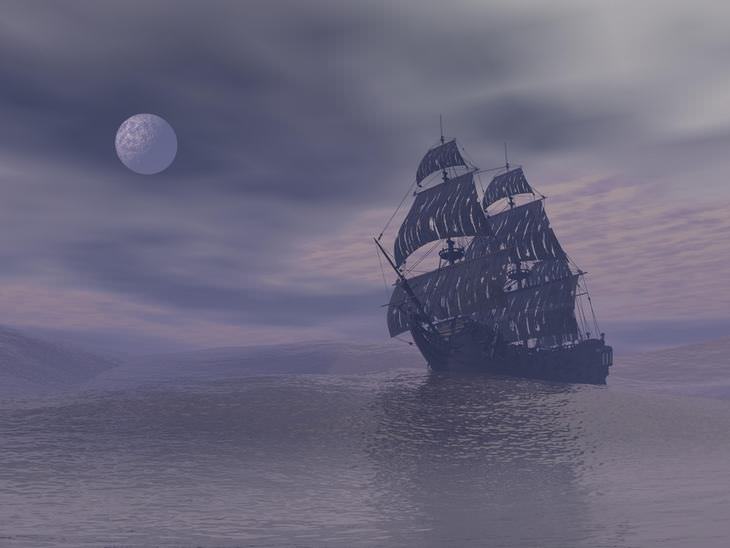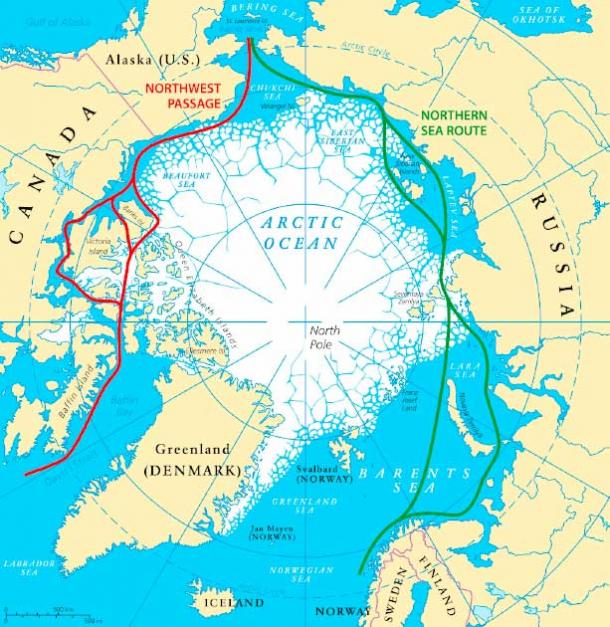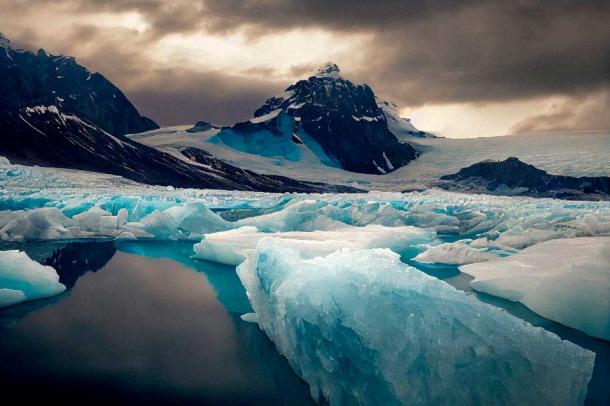There are many strange mysteries that reside in history, but one of the most unsettling is that of the Octavius ghost ship.

Discovered along the coast of Greenland in 1775, the Octavius had no living crewmates on board, with the remains of every crew member found frozen below deck. With such little evidence to fully determine the fate of these 28 crew members, what truly happened to the crew on the Octavius?
From Bright Beginnings to Tragic Fates
The famous Octavius was built during the mid-18th century and was set to sail the high seas in 1761. The ship departed from England with a destination somewhere in Asia with a crew of 28 people onboard. While the ship did reach its intended destination about a year later, it was not so lucky upon its return voyage.
Because the weather had been so warm and the seas so calm, the captain of the Octavius decided to chance traveling through the Northwest Passage . This passage connects the Pacific Ocean and the Atlantic Ocean through the Arctic Ocean around northern Canada.
This feat had not previously been accomplished, so it is assumed that the captain had wanted to be the first to make a successful journey through this route. It would have also significantly cut down on their return time, meaning they would get home much sooner than if they had taken their original route. With the weather as good as it was, he decided it was worth the risk.

The Northwest Passage shown in red. Source: Peter Hermes Furian / Adobe Stock
Unfortunately, the risk wasn’t worth it. Once they reached northern Alaska during the fall of 1762, the ship disappeared. Its last known location was approximately 250 miles north of Utquiagvik, Alaska before it was never heard from again until its eerie discovery.
Frozen in Time: The Eerie Discovery
Though the Octavius was initially lost around Alaska, it was actually discovered off the west coast of Greenland nearly 13 years after its disappearance. In 1775, a whaling ship called the Herald discovered the ship stuck off the coast, buried solidly in ice. After 13 years, the ship itself had some clear decay, but not enough to keep the crew of the Herald from exploring it for goods.
Once they boarded the ship, the Herald crew discovered all 28 crew members of the Octavius frozen to death below deck. Because of the freezing cold temperatures, the sight of the deceased crew was an unsettling one: all the crew members were frozen solid, sitting or laying exactly as they were when they were once living below deck.
The crew of the Herald found the captain of the Octavius sitting at his desk in his cabin, pen still in hand as if he had just been writing a note. Beside him sat his wife and child, huddled together under blankets as if they were taking a quick nap. They also found a sailor with a tinderbox nearby, as if he were trying to warm them all before succumbing to the fatal temperatures.
Spooked by the discovery, the crew of the Herald took nothing from the ship except the captain’s log to determine what happened to the poor souls onboard. Upon reading the book, they discovered that the last log written by the captain was from November 11th, 1762. This indicated that the crew had been dead for 13 years, waiting to be discovered by the first unfortunate ship that found them.

The Octavius disappeared in the icy waters of Alaska. Source: Ai Inspire / Adobe Stock
The Unsettling Voyage of the Dead
As mentioned previously, the ship’s last recorded location in the captain’s log was approximately 250 miles north of Utqiagvik, Alaska. This location is near the start of the Northwest Passage, while their location of discovery was along the west coast of Greenland – at the end of the passage. Given the last location recorded in the captain’s log, it seems the Octavius did indeed succeed in traveling through the Northwest Passage – but not with anyone alive onboard.
Neither historical nor medical experts can fully conclude the fates of those onboard the Octavius in 1762. While death by hypothermia or exposure to freezing temperatures is nothing new, the way the bodies were positioned upon death definitely is. The idea that the captain of the ship was simply writing in his log before instantly freezing to death is incomprehensible, leaving experts scratching their heads at the eerie discovery.

In addition to these illogical details, historians have struggled to find any additional information about the Octavius. They have identified an extremely similar ship, called the Gloriana, which has a nearly identical story to the Octavius. This story’s earliest records are from 1828 and describe the discovery by Captain Warrens of the Try Again .
Captain Warrens discovered the Gloriana in 1775 and his story has the same detailed discovery of the Octavius, including the exact day and year that the crew perished. However, he does not make any mention of the Northern Passage. To this day, experts are still researching to discover if the Octavius and the Gloriana are in fact the same ship.
An Exaggerated Ghost Tale or a Staged Setup?
Though the full story of the fate of the Octavius is unclear, many assume that some of the details of the ship’s discovery may have been exaggerated over time. Perhaps stating that the captain was found frozen at his desk was a way to make the story more frightening, getting passed down as fact to future generations.

Or perhaps there’s another reason the crew was found frozen in the positions they were. Could they have been posed, or otherwise manipulated before their recorded discovery in 1775? The world may never know the answers to these questions, but one thing is certain: the mysterious and chilling tale of the Octavius ghost ship lives on.








